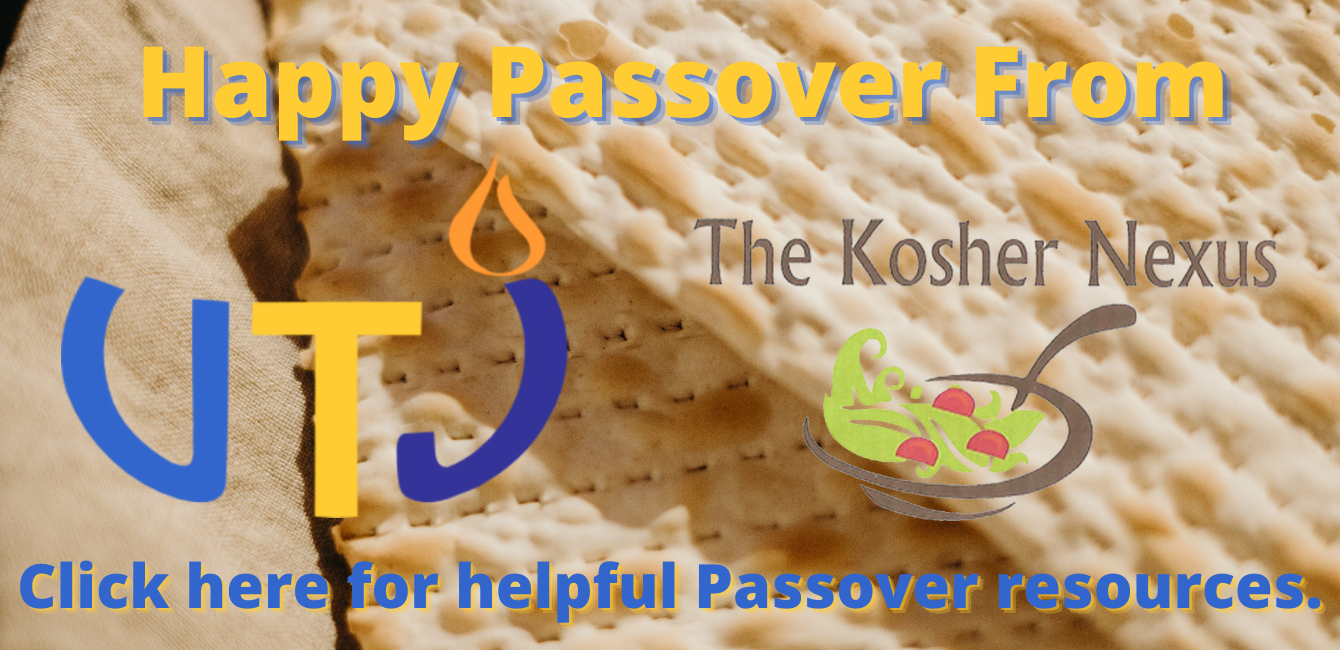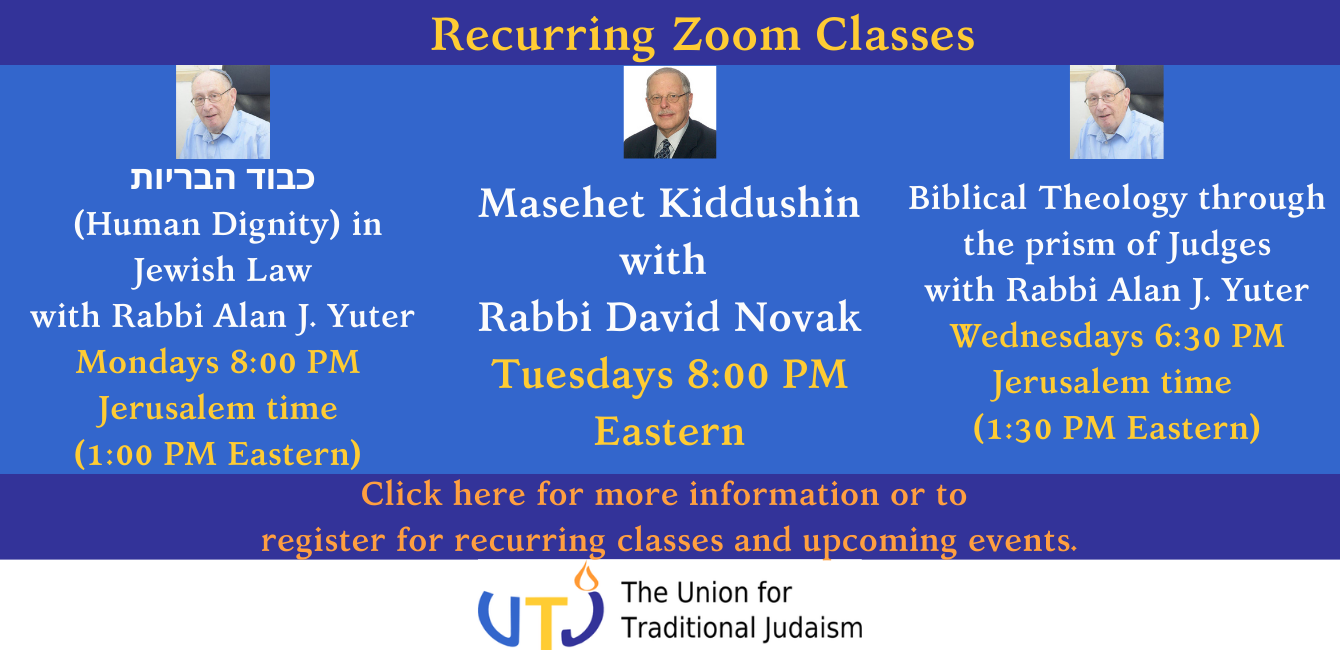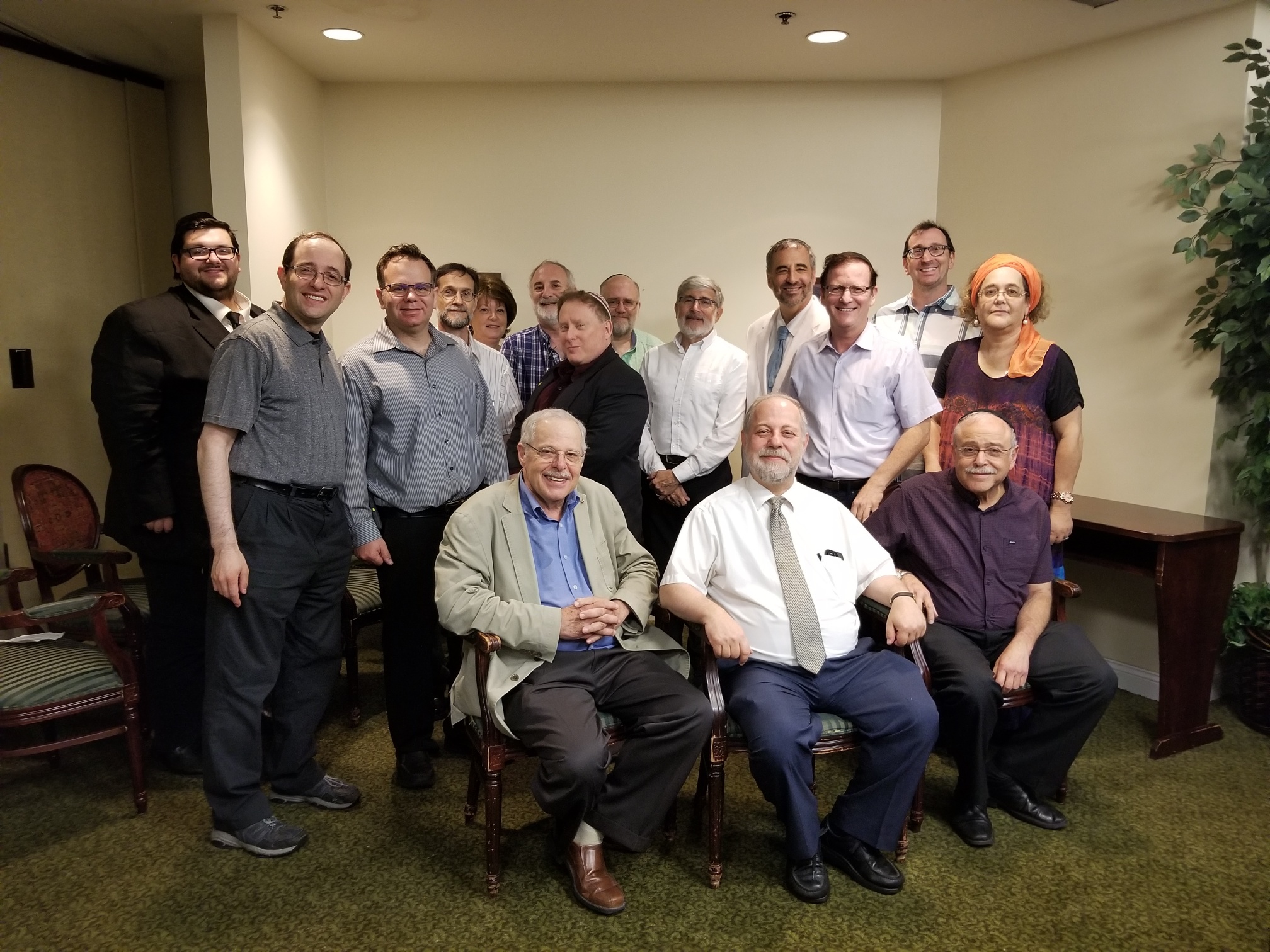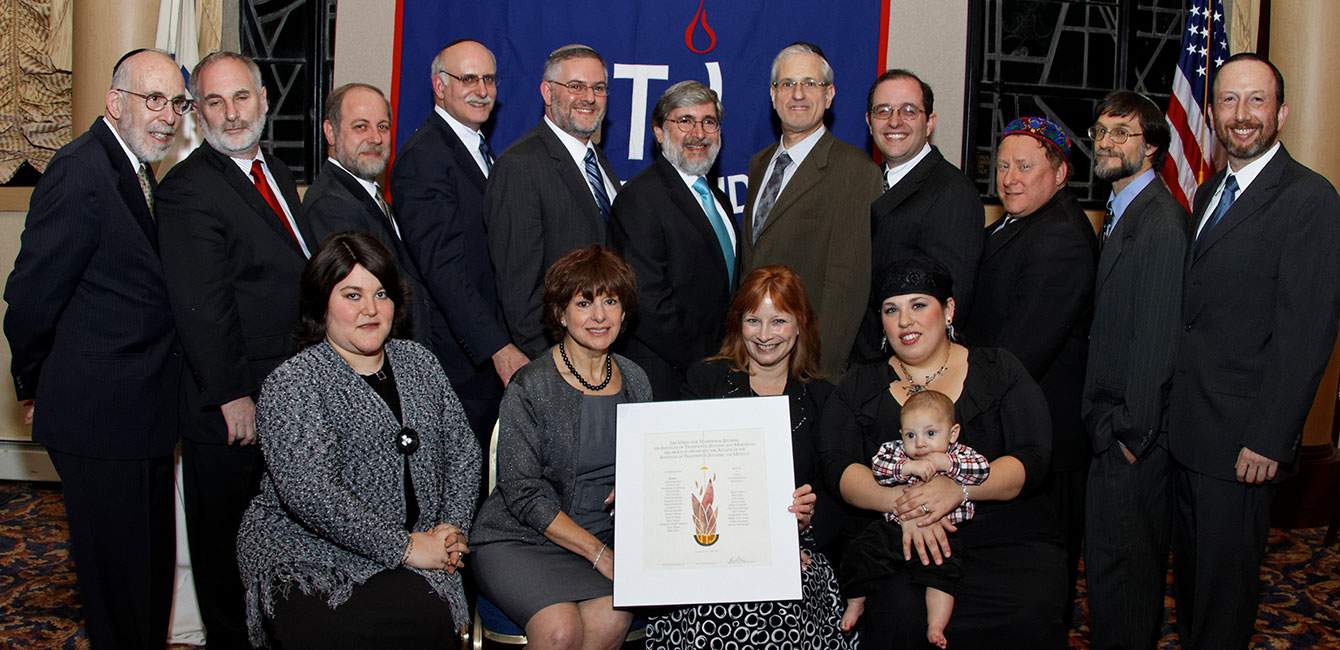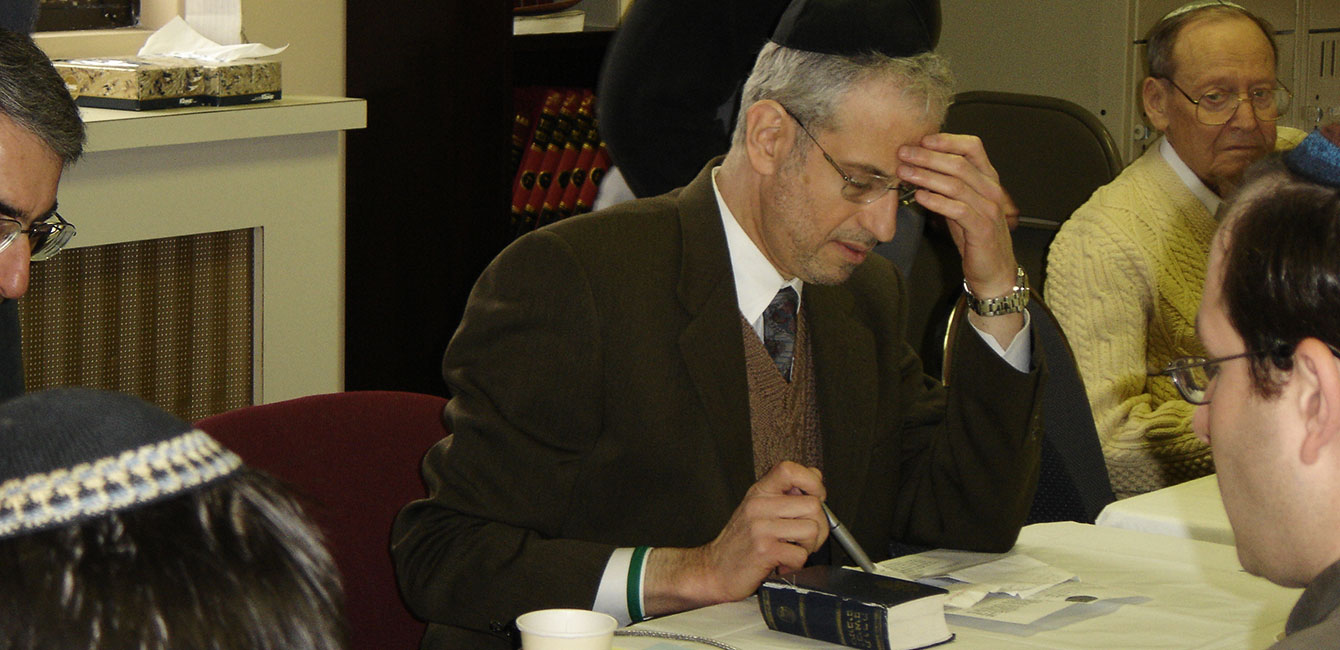by Rabbi Noah Gradofsky
Disclaimer: The opinions expressed here are that of the writer and do not necessarily represent the views of the Union for Traditional Judaism, unless otherwise indicated.
In its first comment on this week’s Torah portion, Midrash Tanhumah takes the succession of commandments in the Torah portion to demonstrate the idea thatמִצְוָה גּוֹרֶרֶת מִצְוָה, וַעֲבֵרָה גּוֹרֶרֶת עֲבֵרָה one mitzvah leads to another, and one sin leads to another.[1] The midrash demonstrates that one sin leads to another through the first series of laws presented in the portion. The portion begins with the people going off to an apparently non-defensive war during which one participant takes a captive woman as his wife.[2] The midrash suggests that the woman is made to shave and cut her nails to make her less attractive and discourage the man’s course of action – but to no avail. From this misdeed, the midrash argues, follows the next situations addressed in the Torah, a man married to two women, one of who is disfavored;[3] the rebellious son;[4] and finally the laws of the treatment of the body of one who received capital punishment.[5]
On the plus side, the midrash notes that a few verses down there the line שִׁלּוּחַ הַקֵּן, the shooing away of the mother bird before taking its eggs or young,[6] is followed by the requirement of placing a parapet when building a house;[7] the requirement of separating grain fields from vineyards;[8] the prohibition of plowing with a donkey and an ox together;[9] the prohibition of mixing wool and flax in clothing;[10] the commandment of tsitsit;[11] and finally some laws of marriage (though interestingly the marriage does not go well).[12] The midrash argues that each of the mitzvot in this list suggests some good fortune – separating grain fields from vineyards suggests having both types of fields; not plowing with a donkey and an ox together suggests owning both forms of livestock; not mixing wool and flax in clothing suggests significant material wealth; the commandment of tsitsit suggests acquiring new clothing; and laws related to marriage implies finding a wife and having children. The midrash suggests that the good fortune implied by each of these commandments is the result of observing the prior commandment.
The succession of עבירות (sins) that leads one to the other is interesting because they seem to involve acts that are permitted by the Torah, such as waging an optional (though permitted) war (it is not clear whether Tanhuma indicates that this is part of the chain) to taking the war bride to having multiple wives to the rebellious son. We often talk about how Torah responds to human desires by providing permissible ways to fulfill those desires. The midrash suggests that not everything the Torah permits is desirable.[13] Even following the Torah’s legislation, our acts can still lead to moral disaster.
Interestingly, though, שִׁלּוּחַ הַקֵּן, the shooing away of the mother bird, is presented by this midrash as part of a virtuous cycle even though many of us would consider it less then virtuous – wouldn’t it be better to leave both the mother and the eggs or chicks alone!?[14] I have two potential answers.
My first explanation is that perhaps the midrash simply does not see שִׁלּוּחַ הַקֵּן in a negative light. But I think there is another potential understanding. Perhaps both שִׁלּוּחַ הַקֵּן and the war bride (and perhaps other mitzvot mentioned in the midrash as well) have the potential to begin an upward or a downward spiral. If a person uses the Torah’s permission to justify problematic acts that a person might otherwise avoid, then this could send a person down the path to desensitization and continued misdeeds. On the other hand, if a person who might otherwise perform a bad act is led by the Torah to limit the extent of that bad act even modestly, this can be a first step toward that person’s moral development.
May we always find in Torah inspiration and education that leads us to moral growth and the best of good deeds.
[1] Thanhuma Ki Teitzei 1:1. See similar text at Devaraim Rabbah 6:4, which credits the observation to Ben Azai, who in fact is quoted for this aphorism at Pirkei Avot 4:2.
[2] Deuteronomy 21:10-14.
[3] Deuteronomy 21:15-17.
[4] Deuteronomy 21:18-21.
[5] Deuteronomy 21:22-23.
[12] Deuteronomy 22:13-19. Notably the parallel midrash at Devaraim Rabbah 6:4 does not mention he marriage.
[13] Famously, Maimonides argues similarly regarding the biblical institution of the sacrificial cult. Guide to the Perplexed 3:32.
[14] See further my teacher Rabbi Alan Yuter’s (forthcoming) article discussing whether one ought to seek out a birds next in order to perform שִׁלּוּחַ הַקֵּן. In email discussions among UTJ rabbis, my teacher Hakham Sasson also noted the Hatam Sofer’s comment that one who performs this ritual unnecessarily “אין רוח חכמים נוחה הימנו the spirit of wisdom does not abide in him.” Responsa Chatam Sofer, Orach Chayim 100.
Enjoying UTJ Viewpoints?
UTJ relies on your support to promote an open-minded approach to Torah rooted in classical sources and informed by modern scholarship. Please consider making a generous donation to support our efforts.




